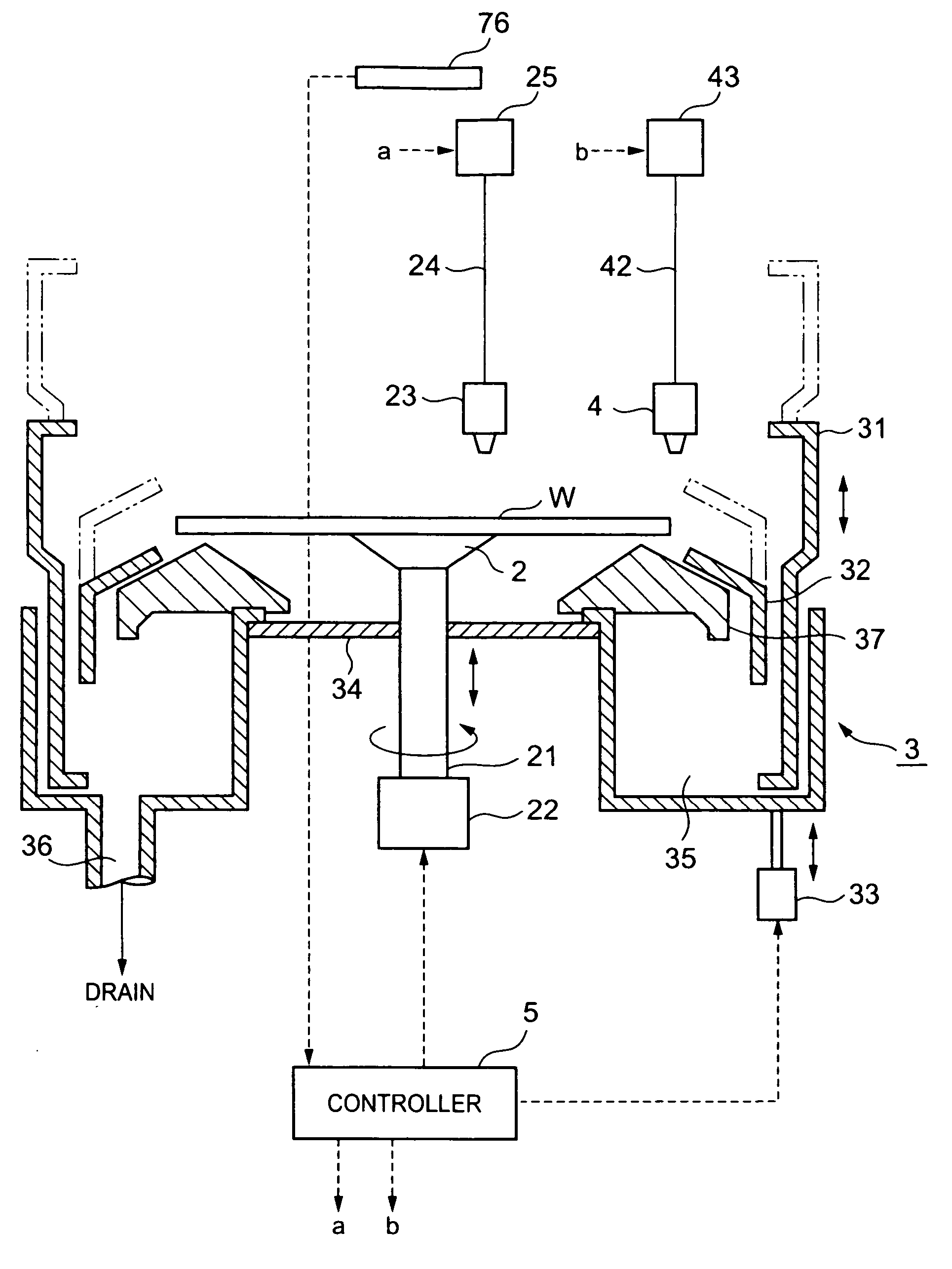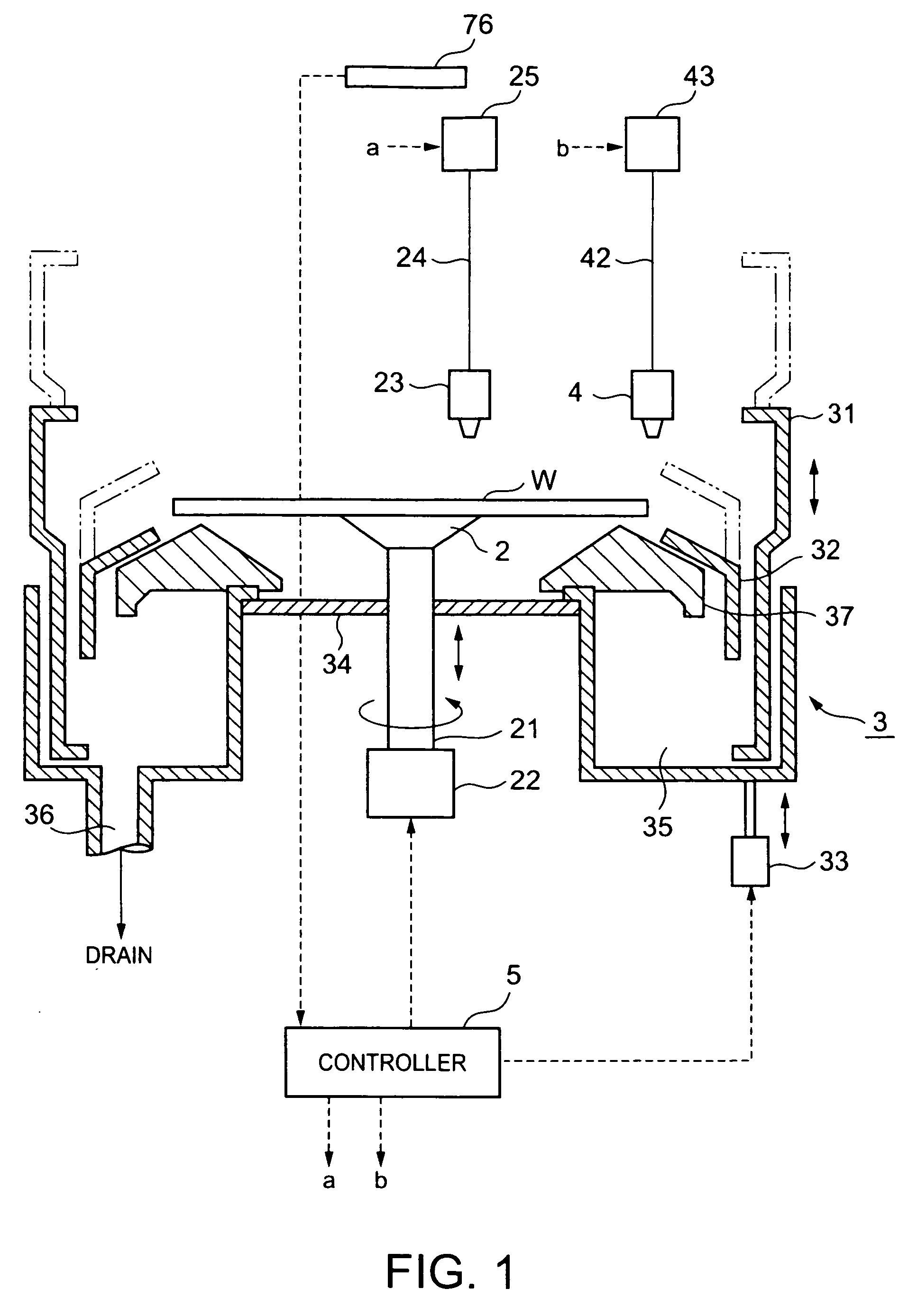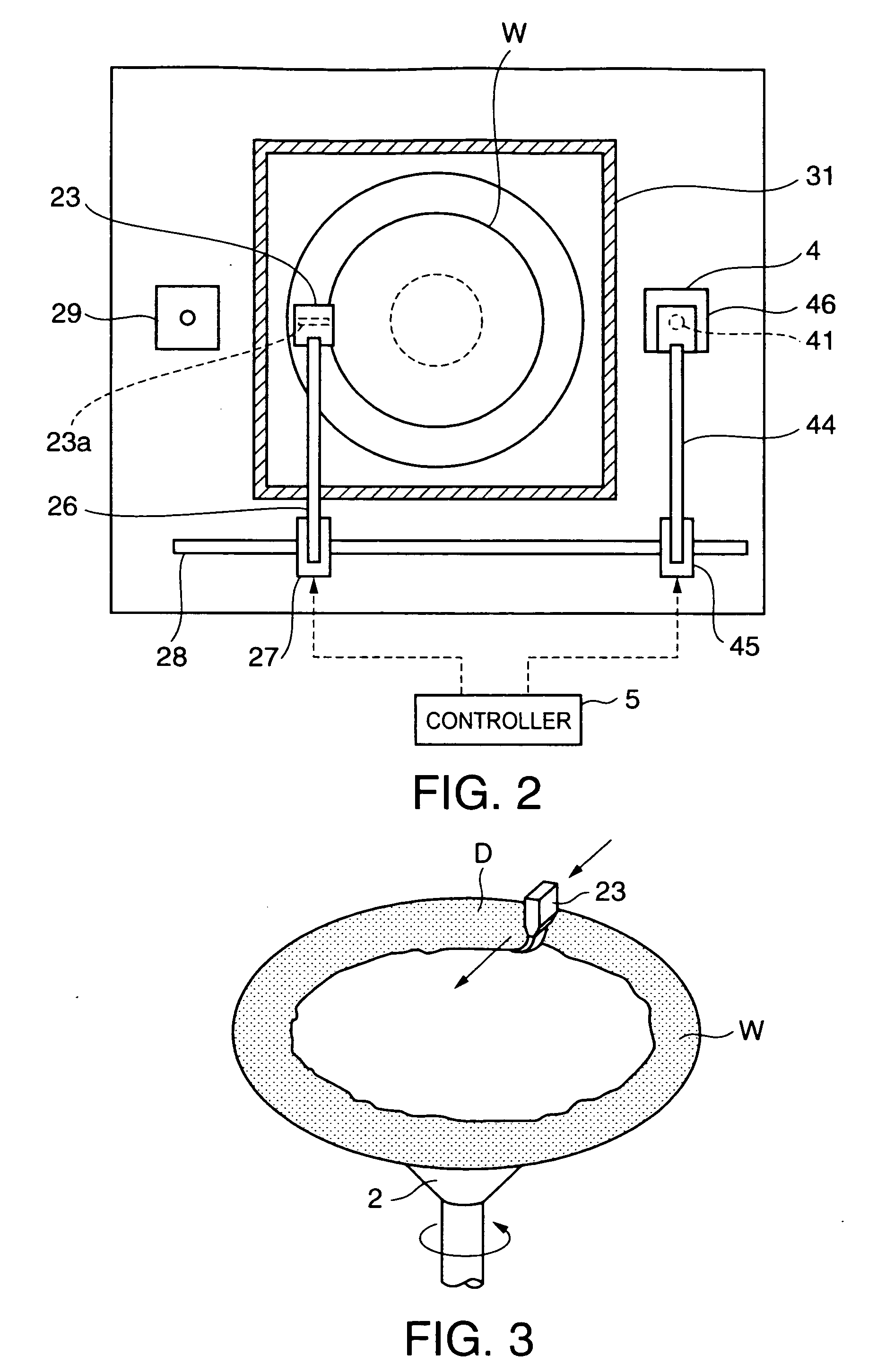Substrate cleaning method and developing apparatus
a technology of developing apparatus and substrate, which is applied in the direction of photomechanical apparatus, cleaning using liquids, instruments, etc., can solve the problems of reducing the width of the resist pattern, the inability of the spin cleaning method to completely remove the dissolution product, and the possibility of residual dissolution product producing development defects, etc., to achieve the effect of reducing the amount of foreign matter remaining on the surface of the substrate, reducing the amount of foreign matter remaining on the substrate, and reducing the defect o
- Summary
- Abstract
- Description
- Claims
- Application Information
AI Technical Summary
Benefits of technology
Problems solved by technology
Method used
Image
Examples
first embodiment
[0041] A developing apparatus in a first embodiment according to the present invention will be described with reference to FIGS. 1 and 2. Indicated at 2 in FIGS. 1 and 2 is a spin chuck, namely, a substrate holding device, for holding, for example, a wafer W, namely, a substrate, by suction in a horizontal position. The spin chuck 2 has a shaft 21 interlocked with a driving mechanism 22 including a rotative mechanism. The spin chuck 2 holding the wafer W is able to rotate and to move vertically. The wafer W is held by the spin chuck 2 coaxially with the shaft 21 of the spin chuck 2.
[0042] A cup device 3 opening upward surrounds the wafer W held on the spin chuck 2. The cup device 3 has an outer cup 31 having a rectangular upper part and a cylindrical lower part, and an inner cup 32 having a tapered upper part tapering upward. A lifting device 33 is connected to the lower end of the outer cup 31 to move the outer cup 31 vertically. A flange formed at the lower end of the outer cup 3...
second embodiment
[0061] A developing apparatus in a second embodiment according to the present invention differs from the developing apparatus in the first embodiment in being provided with a gas blowing nozzle 7 in addition to components like those of the developing apparatus in the first embodiment. As shown in FIG. 6, the gas blowing nozzle 7 may be held together with a cleaning liquid pouring nozzle 4 on a common arm for movement together with the cleaning liquid pouring nozzle 4 or the cleaning liquid pouring nozzle 4 and the gas blowing nozzle 7 may be separately moved. In FIG. 6, the gas blowing nozzle 7 and the cleaning liquid pouring nozzle 4 are fixedly connected by a support member 71. The gas blowing nozzle 7 and the cleaning liquid pouring nozzle 4 are spaced about 30 mm apart. For example, a gas supply pipe connects the gas blowing nozzle 7 to a gas supply system 73. The gas supply system 73 includes a gas source, valves, flow regulators and such. The controller 5 controls the gas supp...
third embodiment
[0069] A developing apparatus in a third embodiment according to the present invention differs from the developing apparatus in the first embodiment in being provided with two cleaning liquid pouring nozzles, namely, a first cleaning liquid pouring nozzle 4 and a second cleaning liquid pouring nozzle 8, pouring a cleaning liquid onto a central part of a wafer W through the first cleaning liquid pouring nozzle 4 and pouring the cleaning liquid onto a part at a predetermined distance from the center of the wafer W. A cleaning process will be described mainly in terms of operations different from those of the first embodiment.
[0070] Step 1: Referring to FIG. 8(a), the first cleaning liquid pouring nozzle 4 and the second cleaning liquid pouring nozzle 8 are disposed at a position corresponding to the center of the wafer W and at a position corresponding to a part of the wafer W, for example, at 80 mm from the center of the wafer W, respectively. Then, the first cleaning liquid pouring...
PUM
| Property | Measurement | Unit |
|---|---|---|
| diameter | aaaaa | aaaaa |
| distance | aaaaa | aaaaa |
| distance | aaaaa | aaaaa |
Abstract
Description
Claims
Application Information
 Login to View More
Login to View More - R&D
- Intellectual Property
- Life Sciences
- Materials
- Tech Scout
- Unparalleled Data Quality
- Higher Quality Content
- 60% Fewer Hallucinations
Browse by: Latest US Patents, China's latest patents, Technical Efficacy Thesaurus, Application Domain, Technology Topic, Popular Technical Reports.
© 2025 PatSnap. All rights reserved.Legal|Privacy policy|Modern Slavery Act Transparency Statement|Sitemap|About US| Contact US: help@patsnap.com



